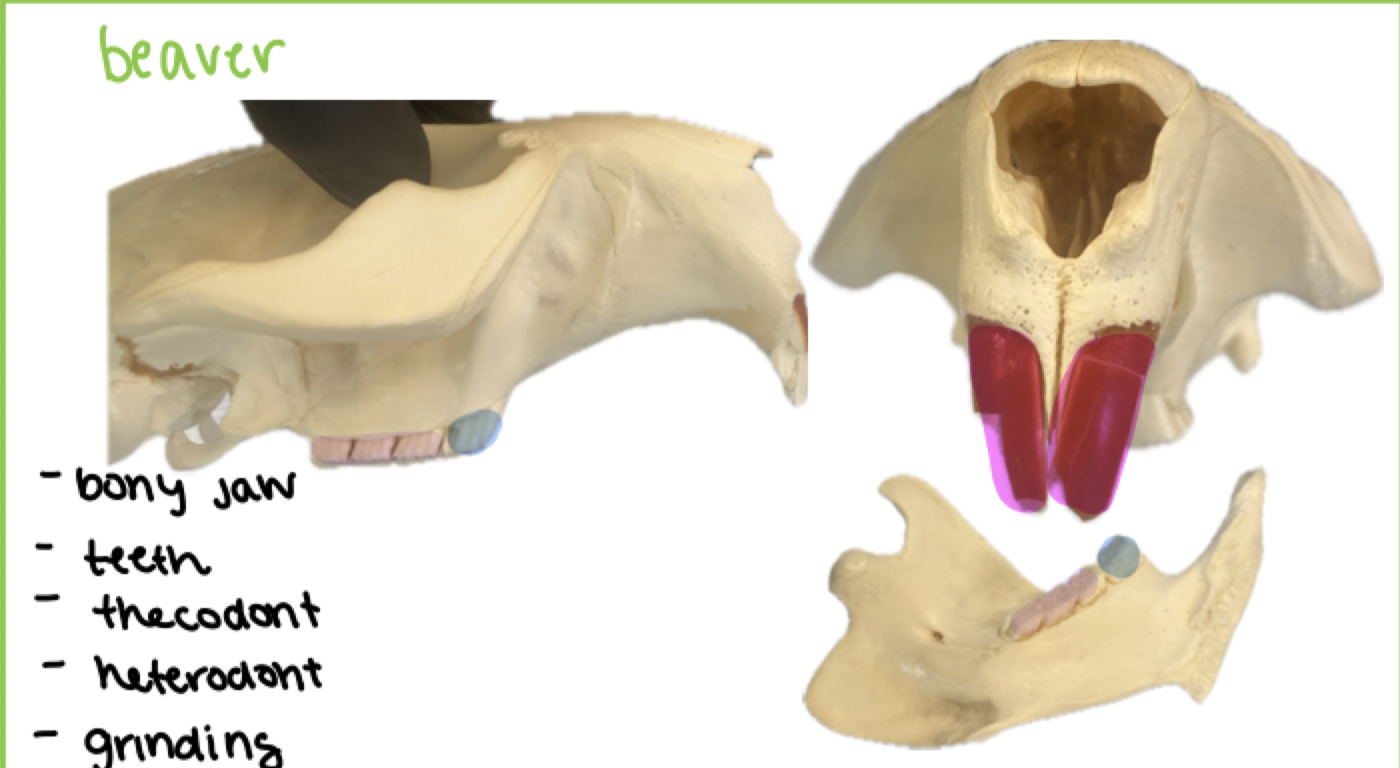Dentition
1/37
There's no tags or description
Looks like no tags are added yet.
Name | Mastery | Learn | Test | Matching | Spaced |
|---|
No study sessions yet.
38 Terms
acrodont
Shark tooth attachment
Pleurodont
Giant salamander tooth attachment
Acrodont
Chameleon tooth attachment

pleurodont
Iguana tooth attachment
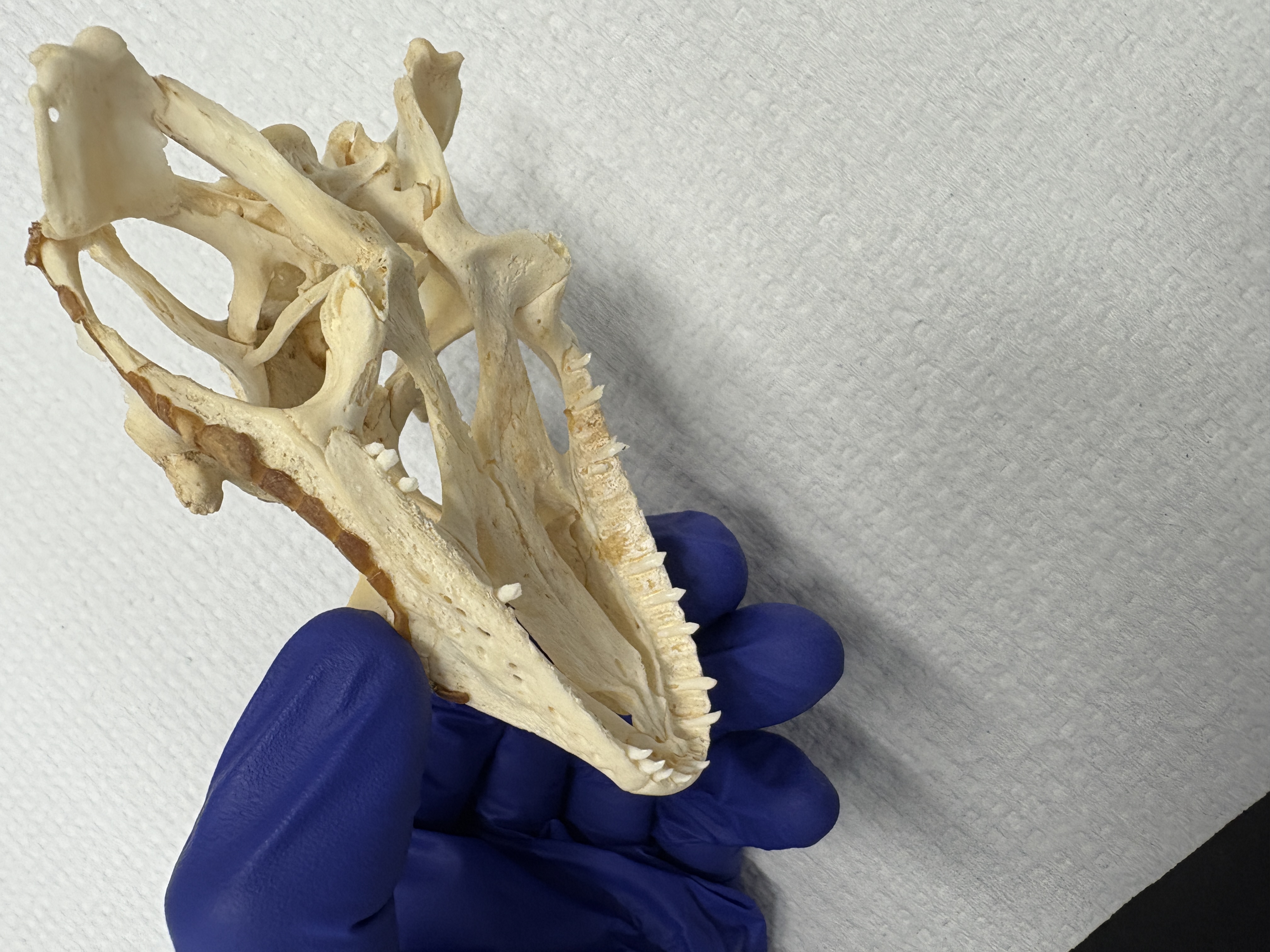
Thecodont
Nile crocodile tooth attachment
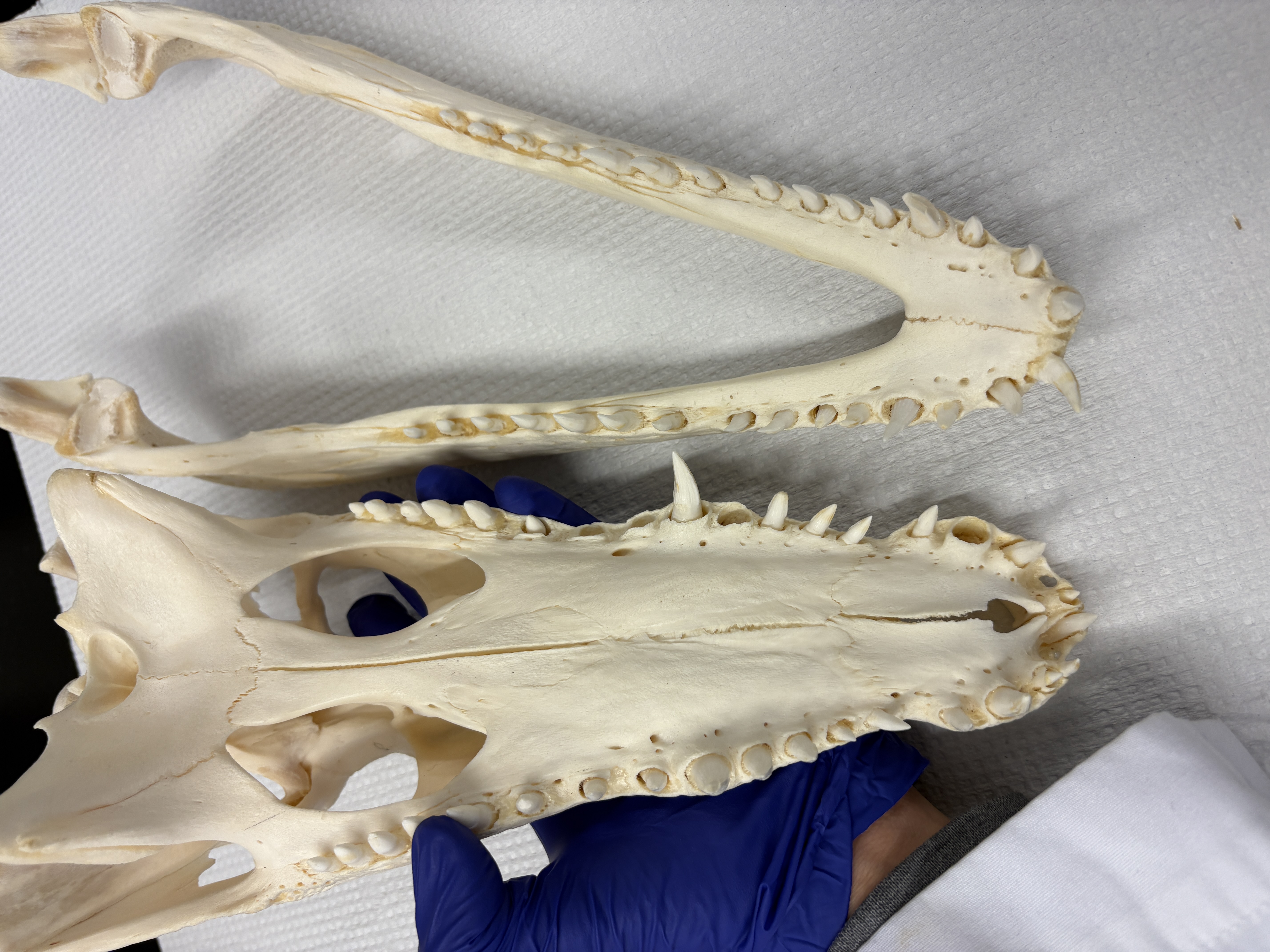
Thecodont
Coyote tooth attachment
thecodont
Mammal tooth attachment
homodonts
Reptiles, amphibians, and fish are (homodonts/heterodonts)
heterodonts
Mammals are (homodonts/heterodonts)
coyotes
— have carnassial teeth
didelphis, chimp, human
species with compression teeth (3)
chinese water deer, longhorn, beaver
species with grinding teeth (3)
hypsodont
chinese water deer, longhorn, and beaver have — teeth
bunodont
chimps and humans have — teeth
beavers
— have specialized incisors
cartilage
the shark has a — jaw
homodont
all the teeth in the jaw have the same general size and shape
heterodont
the teeth in the jaw have distinctly different shapes and sizes
diphyodont
the teeth in the jaw are replaced once during life. This is seen in mammals that possess a set of milk teeth and then replace those with the adult teeth
polyphyodont
teeth are replaced continually throughout life
acrodont
teeth are attached to the dorsal surface of the jaw without sockets
pleurodont
teeth are attached to the medial surface of the jawbones (often the dentary)
thecodont
teeth are set in bony sockets
incisors
tooth specialized to bite and cut
clip pieces off of food
canines
teeth specialized to grab and rip
capture and combat
molars
teeth specialized to grind and tear
mastication and mechanical digestion
carnassials
the last premolar of the upper jaw and first molar on lower jaw of true carnivores
They work like scissors to shear
compression teeth
— work like a mortar and pestle to break up hard substances. They can be found on the jaws of many mammals that are omnivores or have a diet of berries and nuts. These teeth tend to be relatively shorter, low-crowned, or brachydont.
Brachydont
— teeth are a type of tooth characterized by having:
Low crowns (short height)
Well-developed roots
Narrow enamel coverage that does not extend far below the gum line
Grinding
— teeth are found most often in animals that feed on mostly plant material
Coyotes dental formula
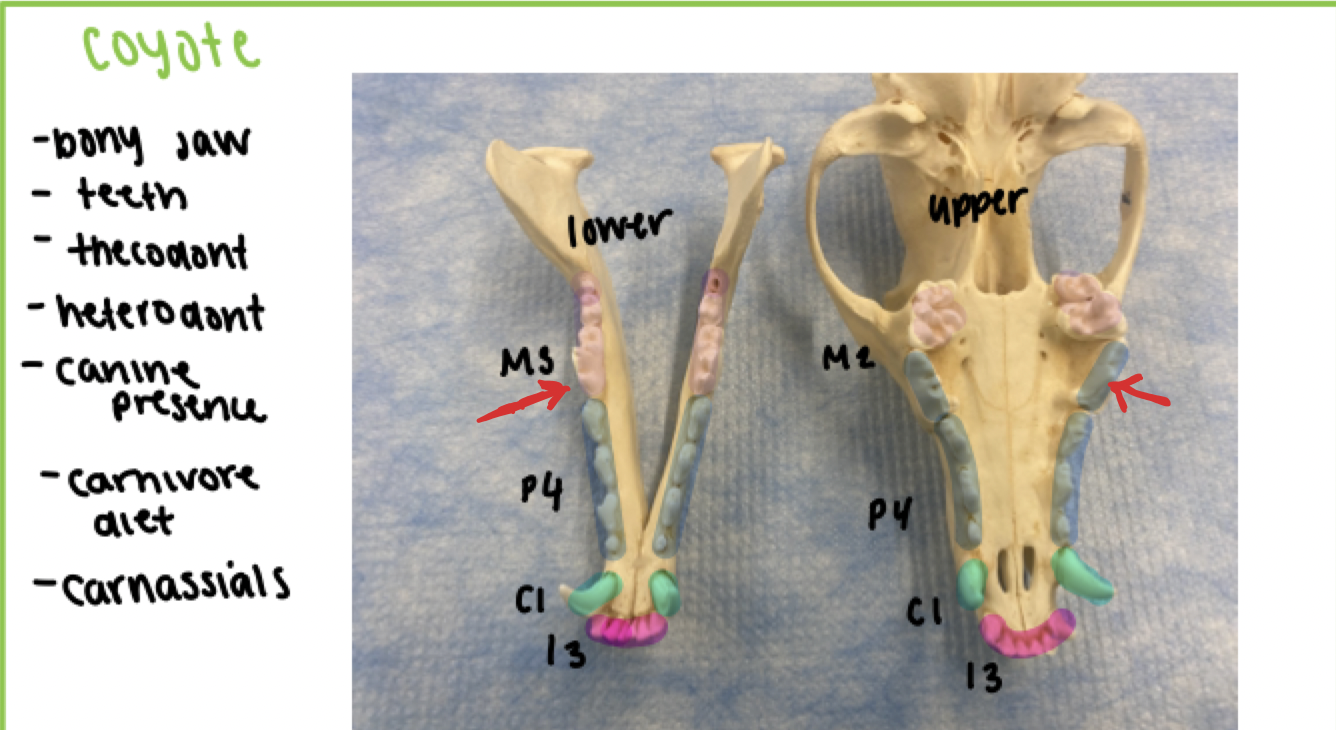
Didelphis dental formula

Thylacine dental formula
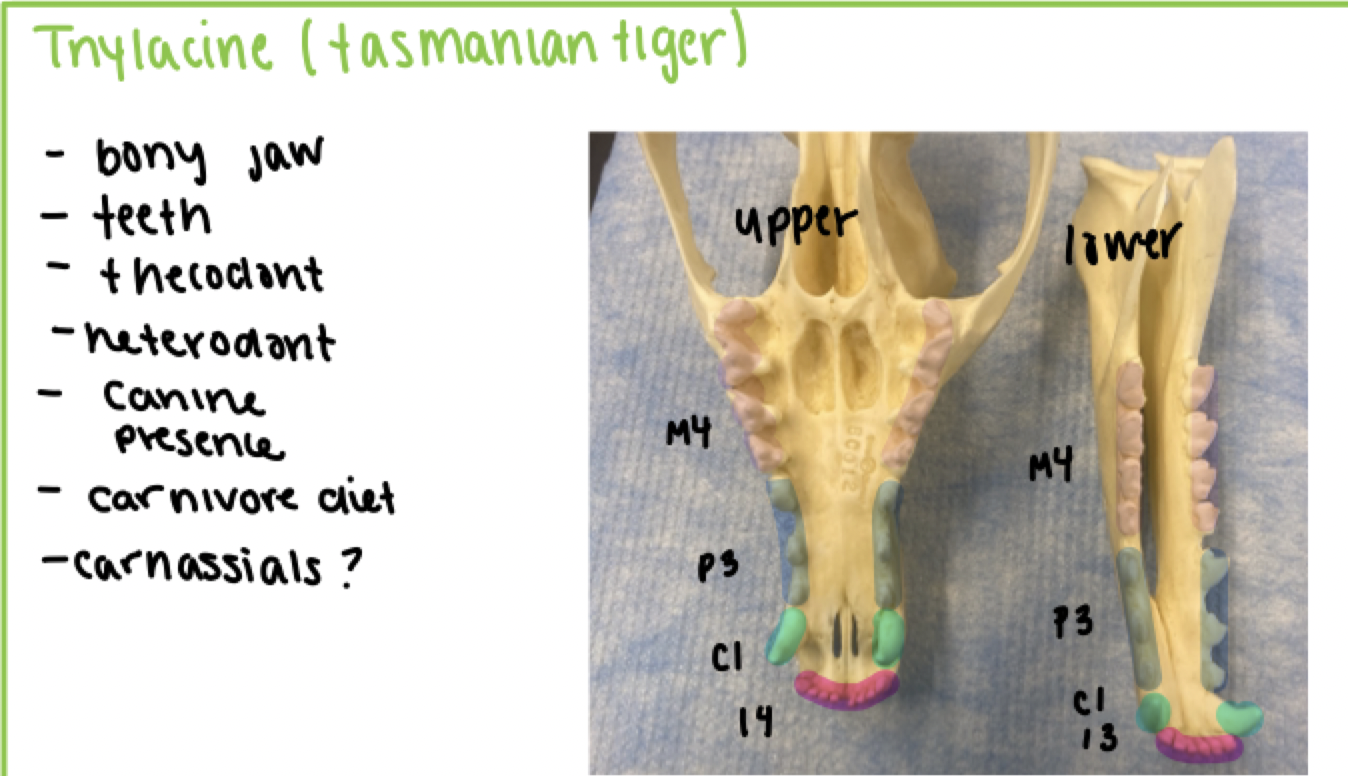
Chimp dental formula
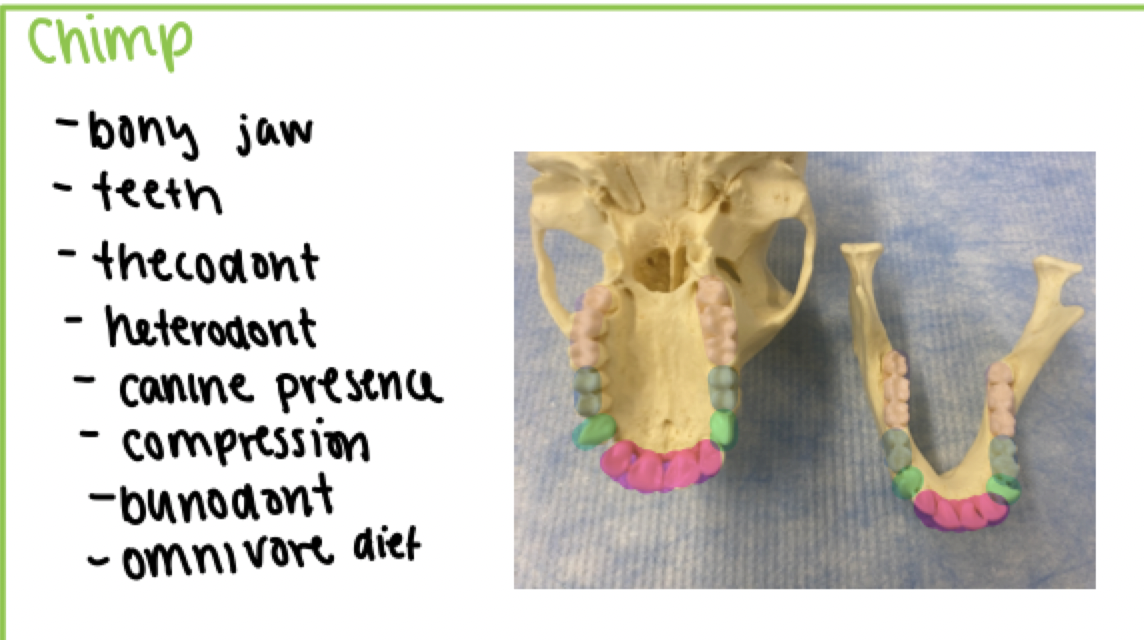
human dental formula
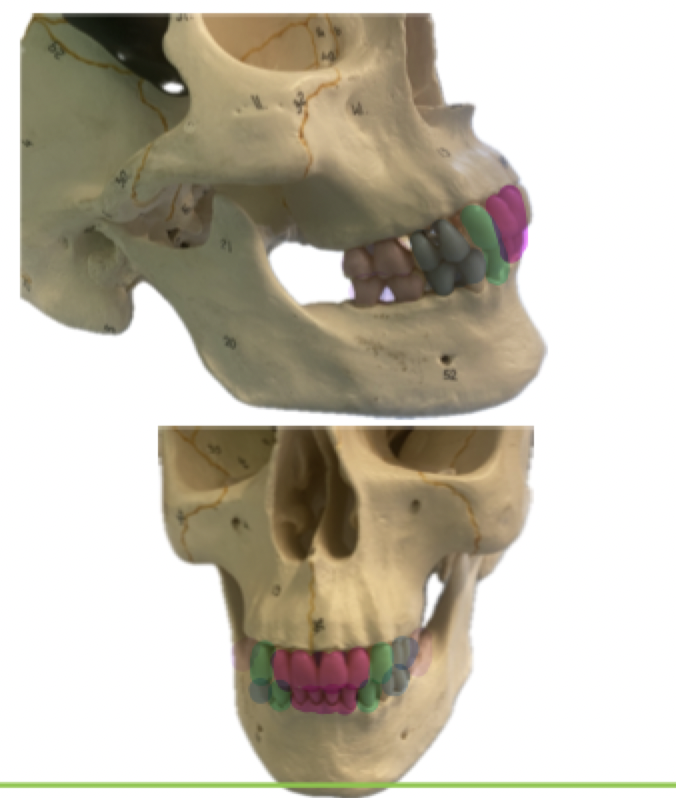
Chinese water deer dental formula
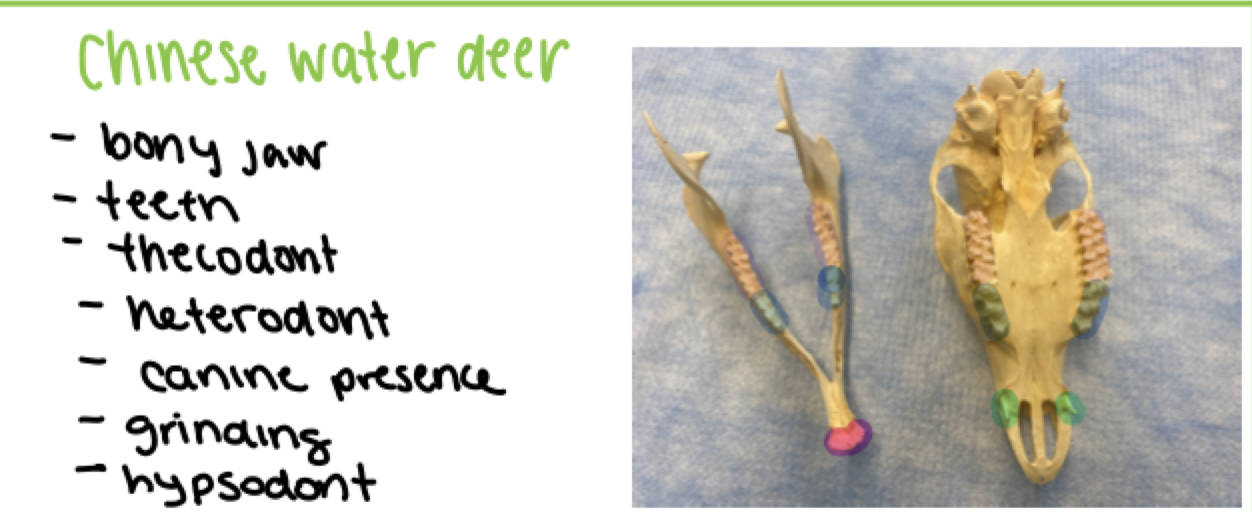
longhorn dental formula
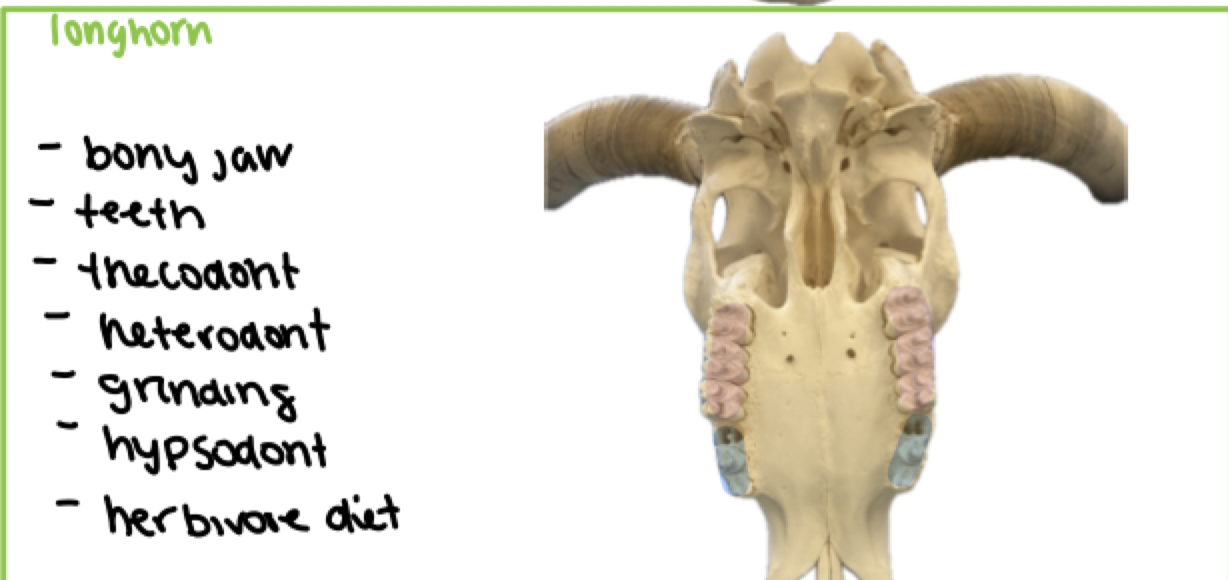
beaver dental formula
